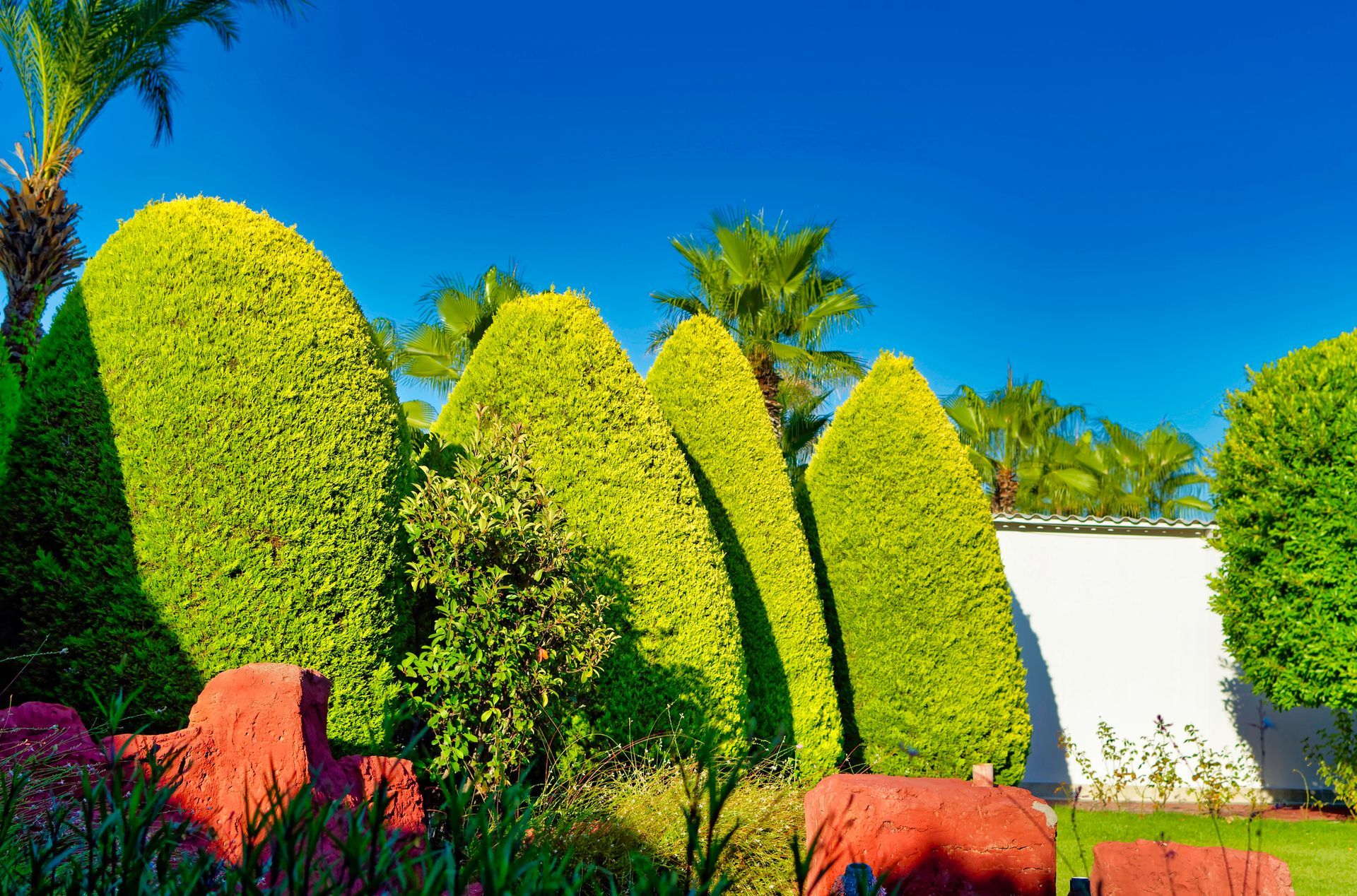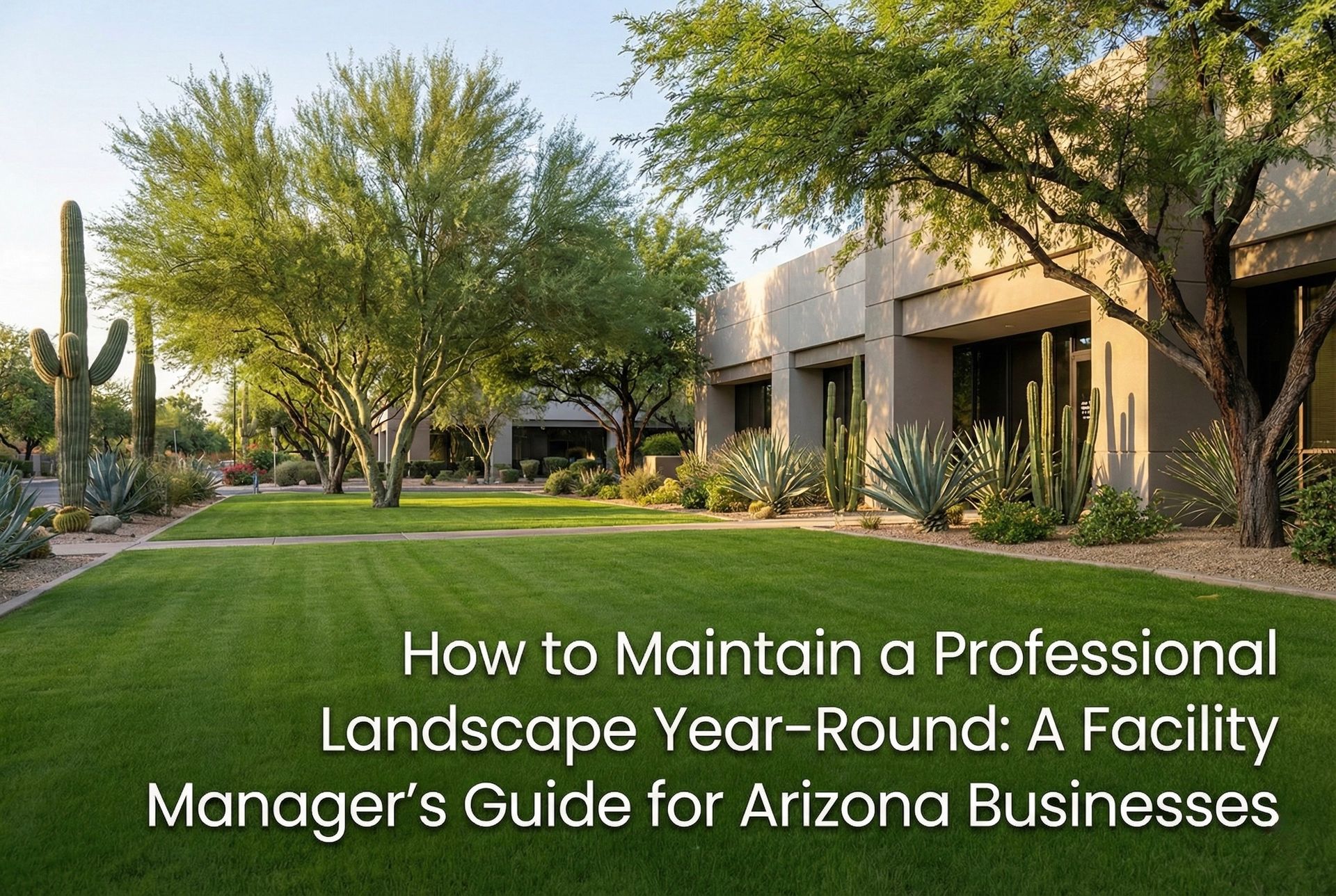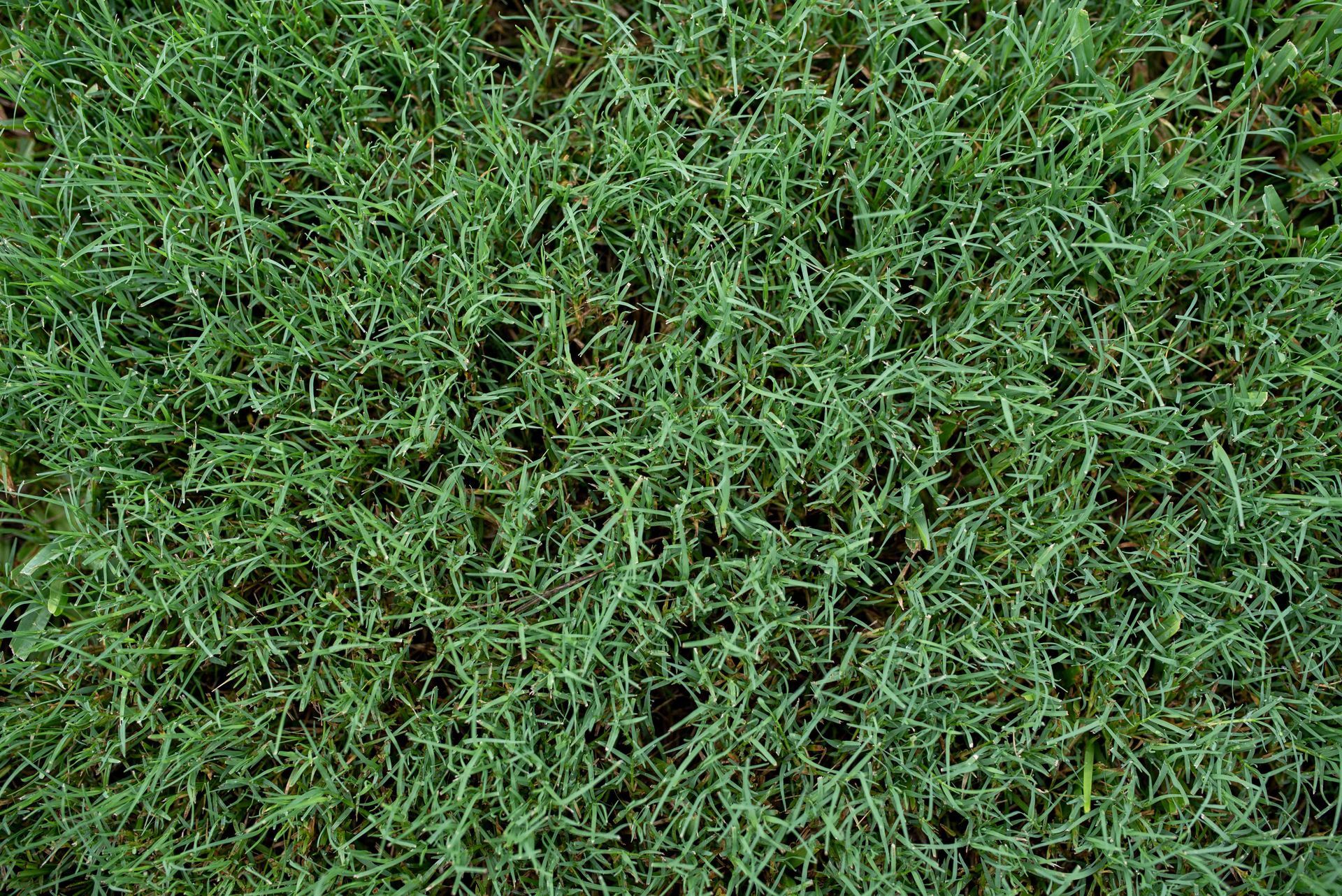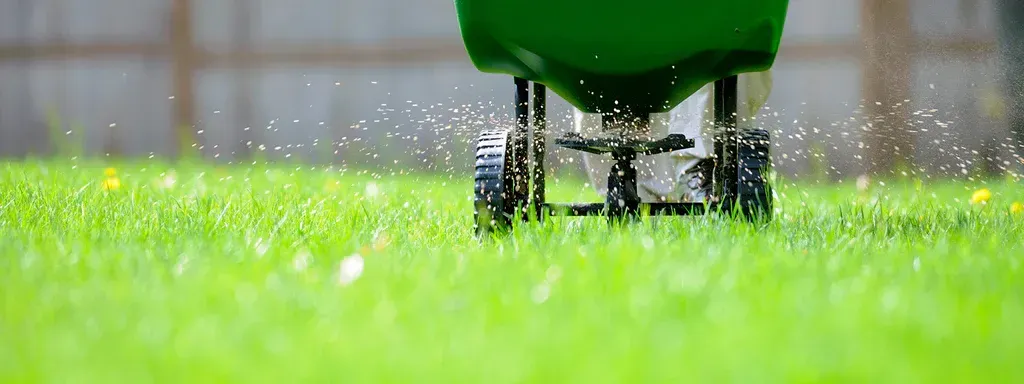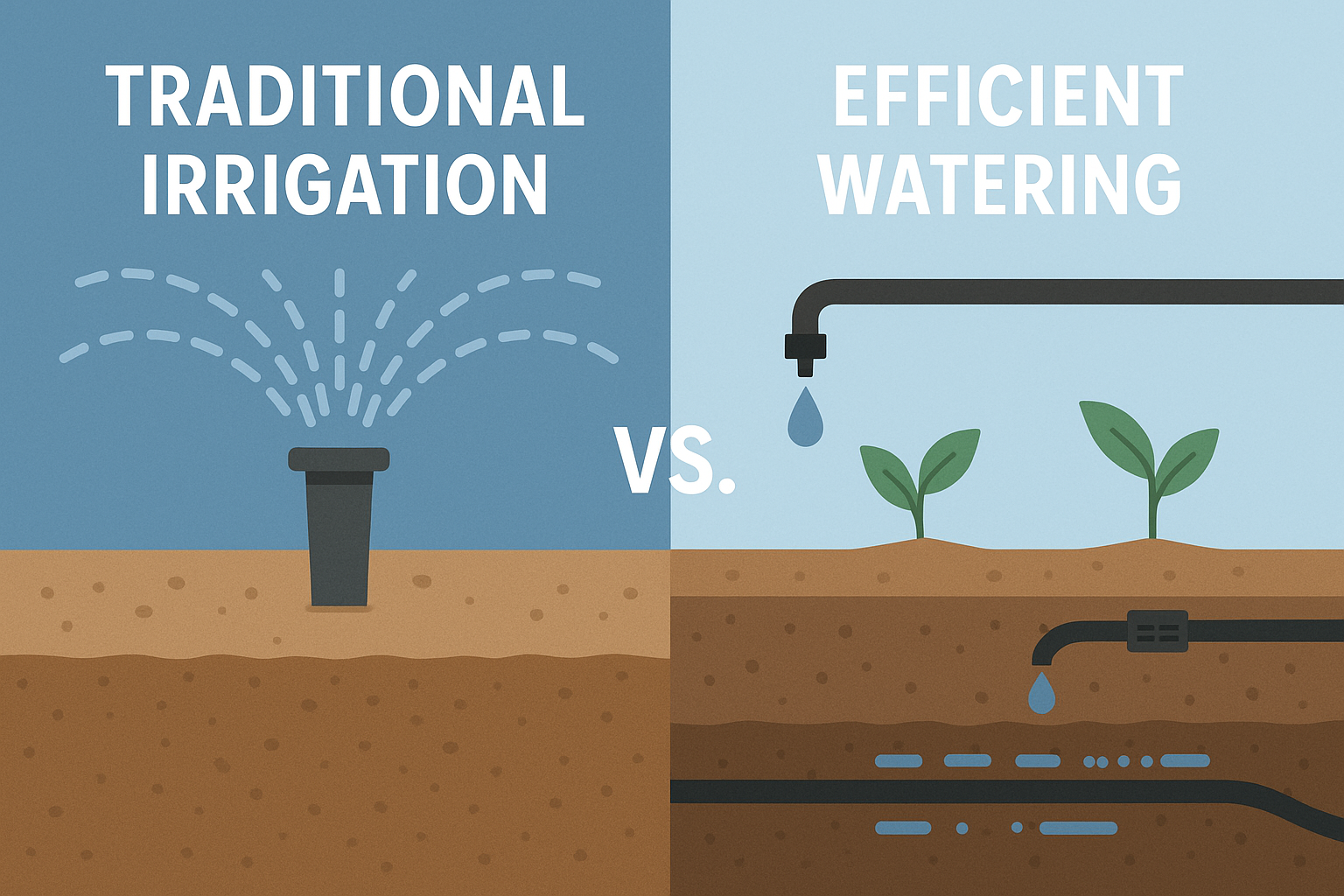
Arizona’s scorching summers and dry winters can make it challenging to maintain a lush, green lawn year-round. Many homeowners struggle to adjust their watering schedules and end up overwatering in winter or underwatering in summer, leading to brittle grass, weak roots, and water waste.
The key to a thriving lawn in Arizona is seasonal adjustments—watering, mowing, and fertilizing at the right times to keep grass strong and resilient throughout the year. If your lawn turns brown or patchy during seasonal transitions, don’t worry—understanding how to water, fertilize, and overseed properly can make all the difference. Learn how to select the best drought-resistant lawn care techniques to further reduce water usage while maintaining a healthy lawn.
Why Seasonal Lawn Care is Important
Unlike temperate climates, Arizona has two distinct lawn-growing cycles. Warm-season grasses (like Bermudagrass and Zoysiagrass) thrive in summer, but they go dormant in winter, turning brown. To maintain a year-round green lawn, many homeowners overseed with ryegrass in the fall, providing cool-season coverage when warm-season grasses stop growing.
Adjusting watering, fertilization, and mowing techniques based on the season ensures that grass stays healthy and stress-free despite Arizona’s temperature extremes. If your lawn struggles with heat stress in summer, explore heat-proofing strategies to keep grass resilient.
Spring Lawn Care: Preparing for Summer Heat
Increase Watering Gradually
As temperatures rise in March and April, grass emerges from dormancy and needs more frequent watering. However, too much too soon can drown roots. Gradually increase watering depth and frequency, allowing grass to adjust to the rising heat without shocking the roots.
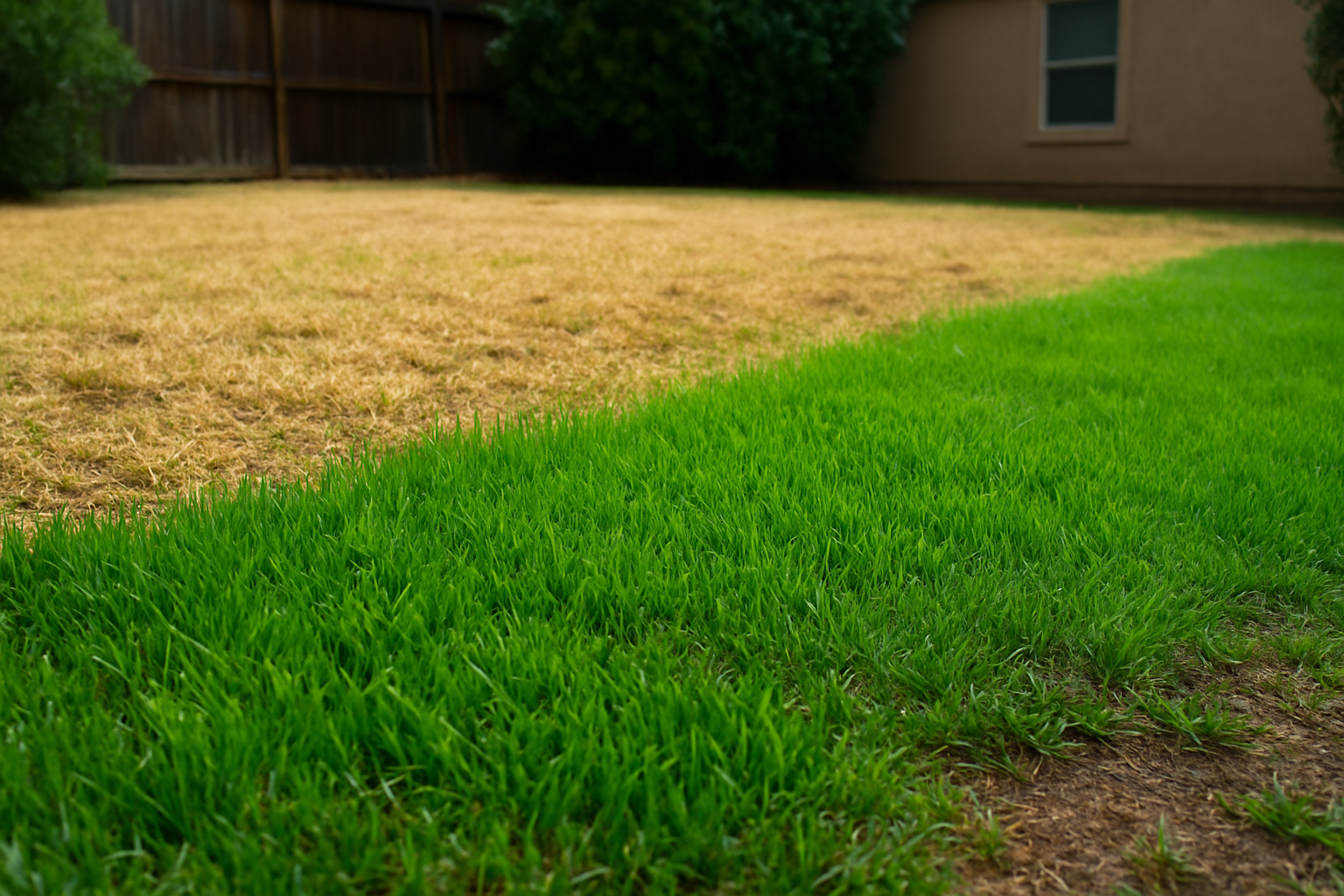
Aerate and Fertilize for Strong Growth
Spring is the best time to aerate compacted soil and apply a slow-release fertilizer to encourage deep root growth before summer heat arrives. If your soil isn’t retaining water properly, improving soil health can help with moisture absorption.
Summer Lawn Care: Surviving Arizona’s Extreme Heat
Water Deeply, But Less Frequently
In June, July, and August, temperatures can exceed 110°F, causing grass to lose moisture quickly. Deep watering (1-2 times per week) encourages roots to grow downward, making lawns more drought-resistant. Watering too often with shallow irrigation leads to weak root systems, making grass more vulnerable to heat stress.
Adjust Mowing Height to Retain Moisture
Keeping grass blades slightly longer (3-4 inches) provides shade to the soil, reducing water loss from evaporation. Shorter grass blades expose the soil to direct sun, causing faster dehydration.
If your lawn struggles with moisture retention, mulching grass clippings can help lock in additional soil moisture. Learn how smart irrigation techniques can further improve water efficiency.
Fall Lawn Care: Overseeding for a Winter-Ready Lawn
Overseed with Ryegrass for a Green Winter Lawn
As warm-season grasses begin to go dormant in September and October, overseeding with perennial ryegrass keeps lawns green through winter. Ryegrass grows quickly, tolerates cooler temperatures, and prevents soil erosion during dormancy.
Reduce Watering as Temperatures Drop
With cooler temperatures in November, evaporation slows down, meaning grass requires less water. Overwatering in fall wastes resources and weakens grass roots, making lawns more susceptible to fungal diseases. Gradually reduce watering to match the season’s needs.
Winter Lawn Care: Keeping Grass Healthy During Dormancy
Watering Should Be Minimal
During December, January, and February, warm-season grasses are fully dormant, requiring little to no water. Ryegrass, if overseeded, still needs occasional watering, but much less frequently than in warmer months.
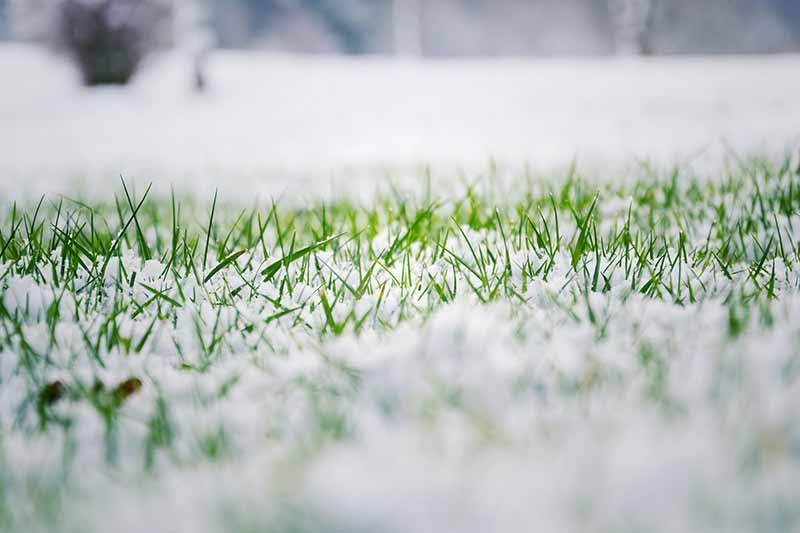
Weed Prevention and Lawn Protection
Winter is the best time to apply pre-emergent weed control to prevent spring weed growth. Since warm-season grass is dormant, it is more susceptible to weed infestations. Removing weeds early prevents nutrient competition when grass starts growing again in spring.
Keeping Your Arizona Lawn Green Year-Round
Adjusting watering, mowing, and fertilization techniques seasonally ensures a healthy, resilient lawn that stays green throughout the year. By understanding Arizona’s climate cycle, overseeding when necessary, and practicing drought-conscious irrigation, homeowners can maintain beautiful lawns without excessive water use.
If your lawn turns brown or patchy during seasonal transitions, don’t worry—understanding how to water, fertilize, and overseed properly can make all the difference. Learn how to select the best drought-resistant lawn care techniques to further reduce water usage while maintaining a healthy lawn.




